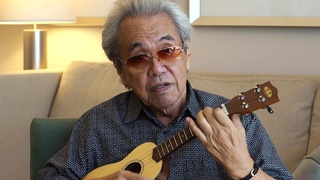Interviews
Nisei Swing Kids
So then in camp, I discovered others who were very much interested in, in this kind of music. As a matter of fact, even the assembly centers -- it's amazing -- for example, at Santa Anita, where there were large groups of kids from LA, they had a dance band at the assembly center, organized and going strong. They even had, had jazz concerts at night, playing records, of course. And discovered, or not -- excuse me -- discussed jazz artists at that time who were very outstanding. And it was kind of neat. So you -- so it kind of made me feel good when I heard this, that, and I realized this, was that among the Niseis, there was a small group of people who are very progressive, very much into music, enjoyed swing, jazz, you know, and, of course, classical music, too.
But because of my interests, to discover youngsters, Japanese Americans, Niseis, digging this kind of music... and in camp, somehow -- I don't know whose idea it was, but a dance band was organized, and the recreation department, which was a part of a, an organized part of the whole system in Poston, helped to sponsor a dance band.
Date: February 18, 2002
Location: Washington, US
Interviewer: Alice Ito, John Pai
Contributed by: Denshō: The Japanese American Legacy Project.







